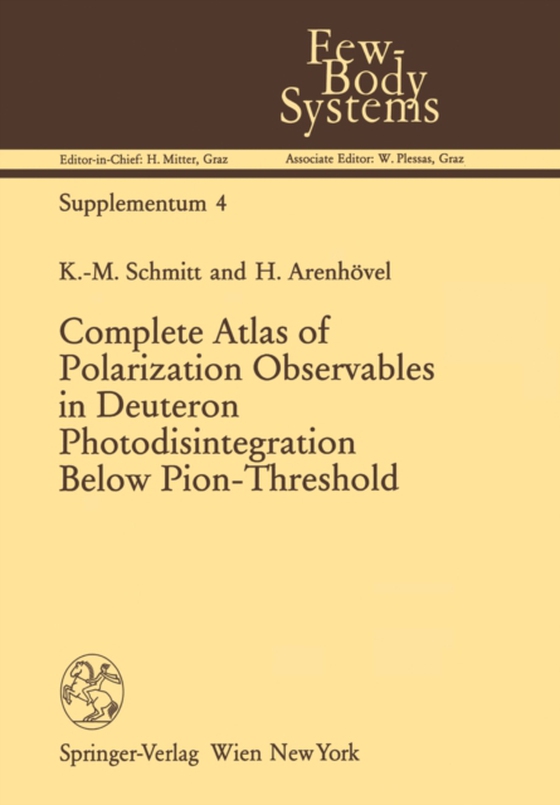
Complete Atlas of Polarization Observables in Deuteron Photodisintegration Below Pion-Threshold e-bog
436,85 DKK
(inkl. moms 546,06 DKK)
For the first time, a complete calculation of all 288 polarization observables of deuteron photodisintegration for polarized photons and an oriented deuteron target is presented for energies below +-production threshold. The observables are calculated within a nonrelativistic framework but with inclusion of lowest-order relativistic effects. Explicit meson exchange currents and isobar configura...
E-bog
436,85 DKK
Forlag
Springer
Udgivet
6 december 2012
Genrer
PHFP
Sprog
English
Format
pdf
Beskyttelse
LCP
ISBN
9783709191910
For the first time, a complete calculation of all 288 polarization observables of deuteron photodisintegration for polarized photons and an oriented deuteron target is presented for energies below +-production threshold. The observables are calculated within a nonrelativistic framework but with inclusion of lowest-order relativistic effects. Explicit meson exchange currents and isobar configurations as manifestation of subnuclear degrees of freedom are included in the calculation. The sensitivity of the various polarization observables with respect to subnuclear degrees of freedom, to electric and magnetic multipole contributions and to a variety of realistic potential models are systematically investigated. Thus this atlas provides the most detailed and systematic survey on polarization observables of this important process. It allows to analyse the different dynamical properties of the np-system as contained in the various observables and, therefore, will be useful for both theoretical studies and for the planning and evaluation of experiments as well. It serves in addition as an important supplement to the recent general review on deuteron photodisintegration by A. Arenhovel and M. Sanzone (Few-Body Systems, Suppl. 3).
 Dansk
Dansk

